August 5, 2021
Long before Kansas was a state and before there was a need for a fort (Riley), or an agricultural university, the Flint Hills existed providing lush grasses and a habitat for animals. All of that was many years before the small cattle town of Manhattan came into existence and evolved into the “Little Apple”.
Manhattan is located nine miles north of I-70 off of exit 313. Along this route, you will drive through the Konza Prairie Biological Station: a great place to see the Flint Hills up close. Be advised to take a walking stick along to chase away undesirable critters as you cover one of the three trails ranging from 2.6 mi. to 6.2 mi. in length.
Manhattan is known for white stone buildings made of the region’s native Cottonwood Limestone and you will find them all over town and on the KSU campus. Actually, I have to give Kansans credit for great use of stone in nearly every town, large or small, that we visited. If you don’t have trees, build with what you have!
1. Flint Hills Discovery Center, Manhattan, KS – A tall grass tale
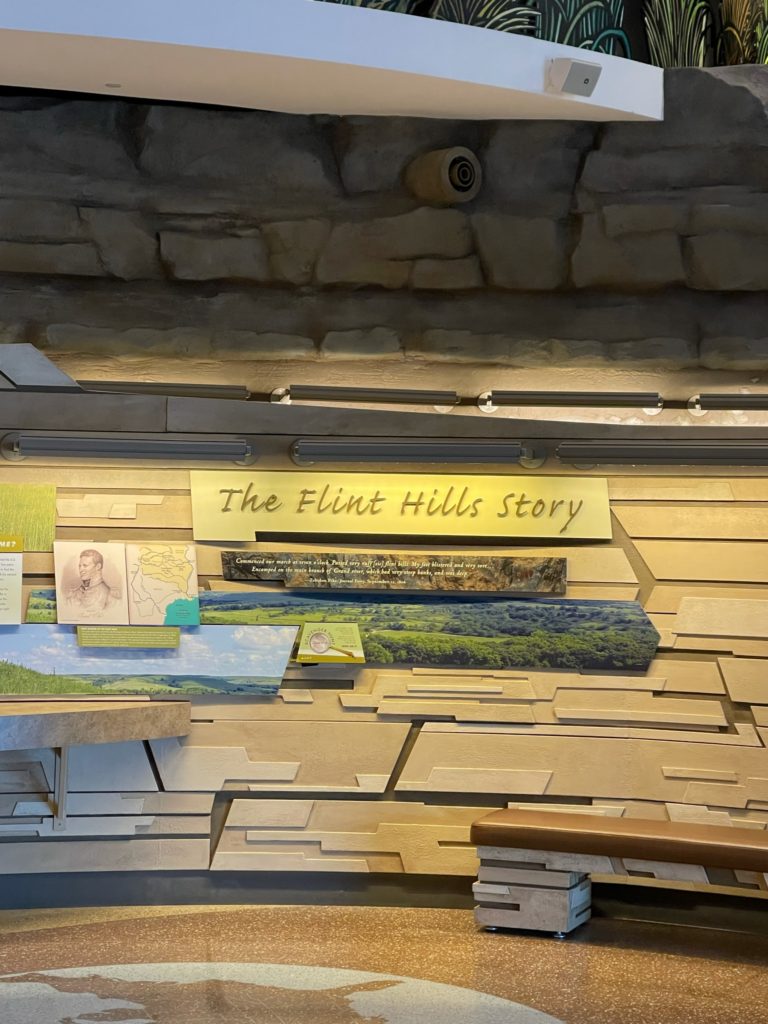
Manhattan sits at the very northern tip of the Flint Hills and the Discovery Center serves as an unofficial gatekeeper to the downtown area and the “hills”. So, the obvious first stop in the city is this family-focused center, which celebrates the last major stand of unbroken tallgrass prairie in North America. The three-story, 35,000 square foott building is filled with interactive displays that will appeal to all ages.
2. Hills on fire – Burning off to grow back better

There are modest fees to gain entrance, but this educational adventure is worth every penny. Don’t miss the theater, where you can see video of the annual “burning” of the grass that is a regenerative process that surely was discovered, maybe even by accident, by the Indians who inhabited the area for generations. I’m sure I smelled smoke at times.
The Hills are the most interesting geography in the state and I look forward to another trip to Kansas just to concentrate on them by riding my motorcycle throughout them from north to south and east to west. There is an organized cycle “ride” the first Sunday of each month in the warm months, that accomplishes this.
3. Kansas State University Gardens and Insect Zoo, Manhattan, KS – Acres of flowers

Jane probably enjoyed the KSU Gardens as much or more than I did a stop at the local donut shop, but who can say. And then to find that the Insect Zoo was close by was more than she could ever hope for. Too bad it is only open in the PM and we were in the Gardens to start the day.
KSU was the nation’s first Land-Grant university (thank you President Lincoln for the passage of the bill creating them!) and if you are on campus during the appropriate season, you might catch a football or basketball game. Both sports in which the Wildcats have a rich tradition.
4. Varsity Donuts, Manhattan, KS – A stop for Roger

Speaking of pastries, Varsity Donuts is a landmark that is located about a block outside the front gate of KSU. I would have to recommend it for an early day coffee and pastry stop. I‘m not a gourmet pastry guy but they have about anything you can imagine in their display cases. So, put your travels on “pause” and sit down for a coffee and sweet-tooth satisfier. It’s safe to call this an Aggieville icon that you should visit, while you are perusing the numerous retail, food and drink establishments in this haven for KSU students.
5. Cavalry and 1st Division Infantry Museums, Ft. Riley/Junction City, KS – A lot of soldiering has been done here
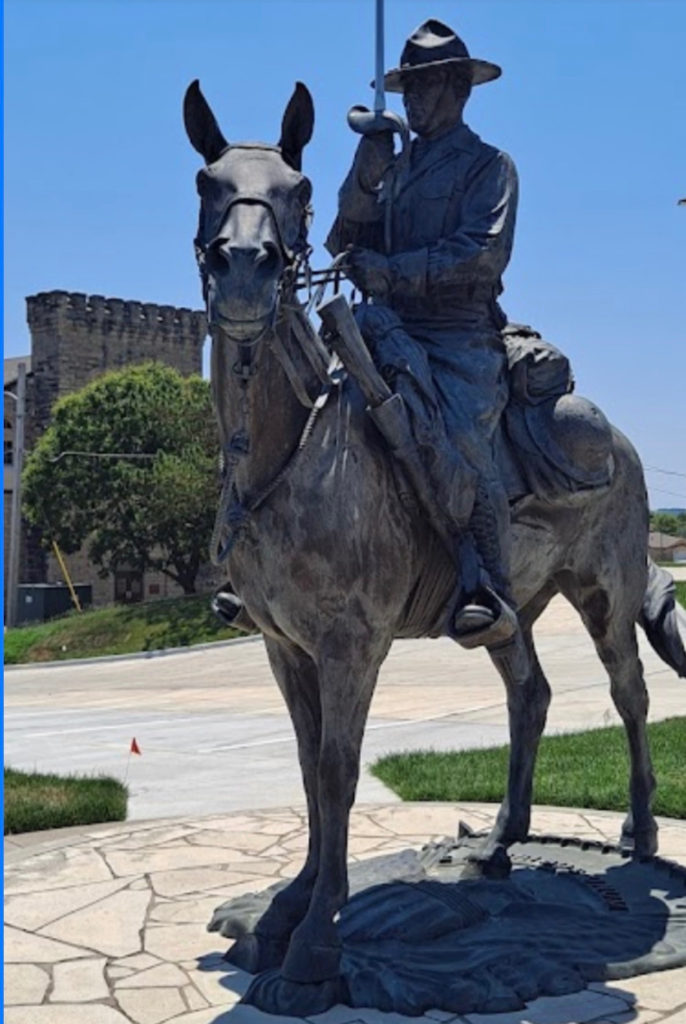
As you know, I have an affinity for military museums and the thought of getting a two-for-one deal was exciting to me. The US Cavalry Museum and the 1st Infantry Division Museums are both located at Ft. Riley, but they were not back in service yet, due to COVID. So that was a major disappointment for me.
George Custer’s name is prominent around here and they have preserved the quarters, in which he resided, while stationed here. It was from here that he launched his participation in the ill-fated Battle of the Little Big Horn, which was just across the current Montana state line, although it was Indian Territory at that time.
6. Dwight D. Eisenhower Presidential Library & Museum, Abilene, KS – Location of childhood home and burial site
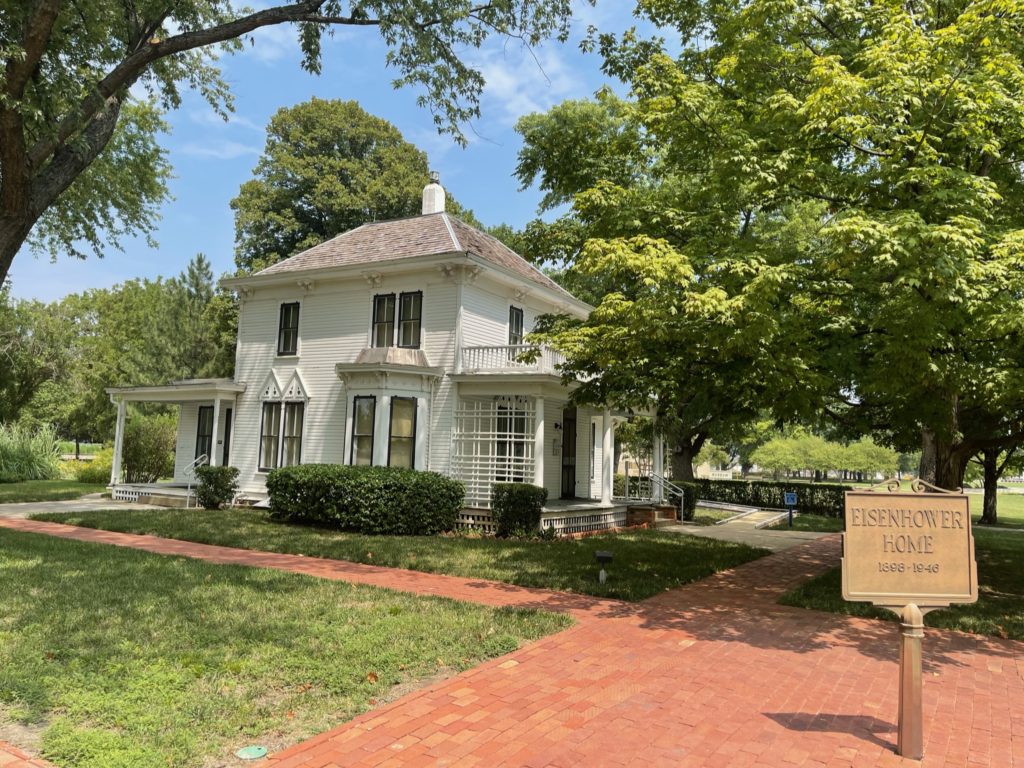
We took exit 275 south off of I-70 and drove into the old-time cattle town of Abilene. Unfortunately, the Dwight D. Eisenhower Presidential Library & Museum in Abilene was also temporarily closed, but we had been there on a previous trip and already knew how spectacular it is. They claim to have all-new exhibits and I was anxious to see them. Next time!
Eisenhower’s boyhood home is also on the grounds and he and wife, Mamie, are buried in the small chapel on the grounds. If you want to see both presidential and war memorabilia, you need to make this stop and allow plenty of time to linger since there are several buildings and 25,000 sq. ft. of space to examine.
“Ike” as we know, went from Abilene to West Point for his education and to become an Army officer. As a member of the football team, he played against the Carlisle Indian School, which was the model school that the Haskill Indian University was patterned after, as you learned yesterday.
7. Greyhound Hall of Fame, Abilene, KS – Really fast dogs are honored here
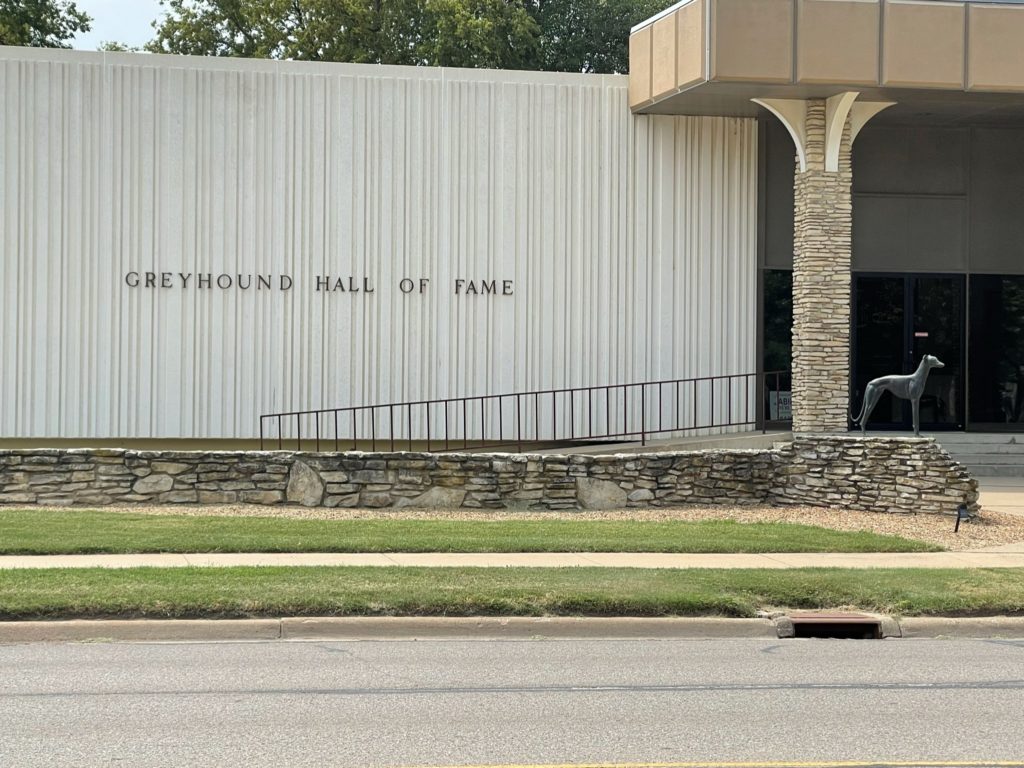
I believe there is a museum for almost everything and I was reminded of that, while at the Eisenhower Center in Abilene. Just across the street to the west is a neat looking modern structure that had the words “Greyhound Hall of Fame” on the front.
It’s free, but wouldn’t need to be for those interested in learning about the breeding, racing and history of the sport. Some friendly, retired greyhounds might greet you and steer you toward the theater, museum or meeting rooms. You might need to be a real “fan” to know the inductees, but both dogs and industry pioneers are immortalized here.
8. Abilene & Smoky Valley Railroad, Abilene, KS – Last surviving steam engine
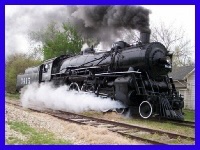
While you are in the neighborhood, you might want to take a few moments to recover from all the walking at Eisenhower’s and take a train ride on the Abilene & Smoky Valley Railroad, whose depot is a block away. You can also avail yourself of the dining car on this trip.
This excursion train chugs through 10 miles of Smoky Hill River countryside between Abilene and Enterprise from May to October. It is pulled by the restored #3415 Steam Engine, that was built in 1919. It is the only operating steam engine train in Kansas today and travels at a leisurely 10-15 mph.
9. Seelye Mansion, Abilene, KS – One of 8 wonders of Kansas architecture
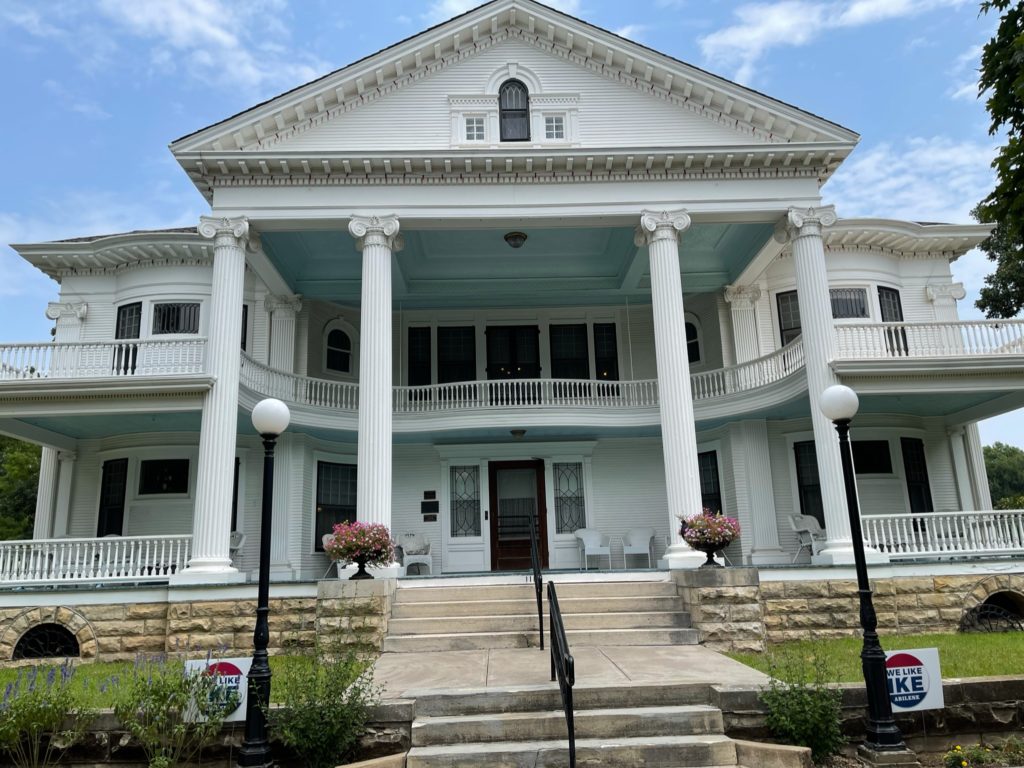
After visiting the St. Louis World’s Fair in 1904, Dr. A.B. Seelye, a local doctor, was inspired to build a 25-room Georgian-style mansion in Abilene. Although privately owned, you may tour the Mansion, Patent Medicine Museum and Gardens for a price.
Seelye made his fortune in patent medicine and had a laboratory, which is now the medicine museum. His daughters never married and lived in the home into their 90’s. The home sold in 1981 and the new owner shared the mansion with them for several years.
It contains the original furniture, Edison light fixtures, a ballroom and a bowling alley, most of which were purchased at the World’s Fair at a cost of more than the $55,000 construction price of the mansion. The furniture reportedly sits just as Mrs. Seelye placed it over 100 years ago.
Heading out of town, we began to see lawn chairs pop up along the main thorough-fare and we began to be suspicious. It seems we nearly found ourselves in the middle of the parade kicking off the Central Kansas Free Fair, one of the largest in the state.
We didn’t stay long enough to learn what was ”free” or if that was just a ploy to suck us in to spend some money, but it looked like fun was brewing. Yet, we had lots of daylight still to burn, so we headed west toward Salina.
Editor’s Notes: In case you missed it, check out the Pacific Coast 20-day diary: Day 2 – Bonner Springs, KS to Manhattan, KS blog. Be on the lookout for blog posts highlighting each of the 20 days of this trip.


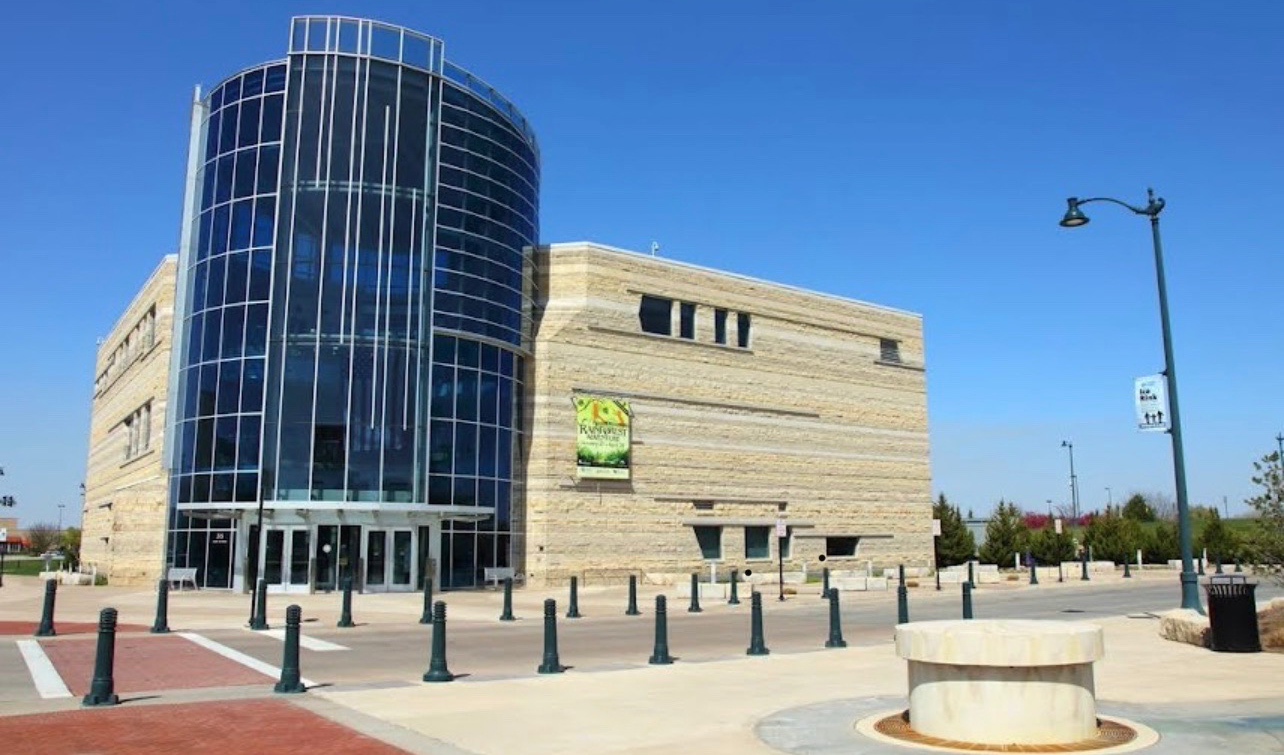



Enjoyed the post. It’s been years since I’ve been to Abilene – I did start quietly singing that song.